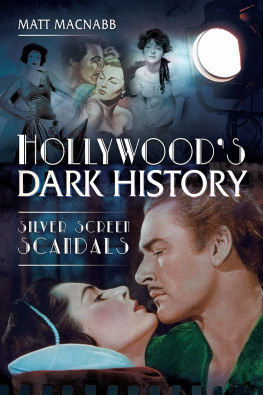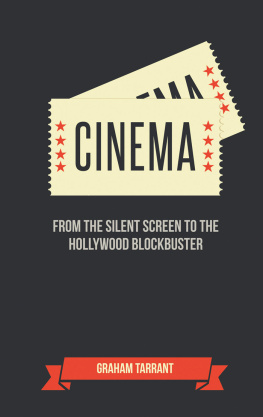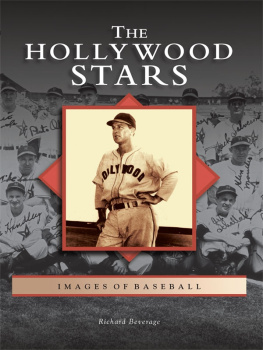Pagebreaks of the print version

HOLLYWOODS
DARK HISTORY
HOLLYWOODS
DARK HISTORY
SILVER SCREEN SCANDALS
Matt MacNabb
First published in Great Britain in 2019 by
PEN AND SWORD HISTORY
An imprint of
Pen & Sword Books Ltd
Yorkshire Philadelphia
Copyright Matt MacNabb, 2019
ISBN 978 1 52674 074 8
eISBN 978 1 52674 076 2
Mobi ISBN 978 1 52674 077 9
The right of Matt MacNabb to be identified as Author of this work has been asserted by his in accordance with the Copyright, Designs and Patents Act 1988.
A CIP catalogue record for this book is available from the British Library.
All rights reserved. No part of this book may be reproduced or transmitted in any form or by any means, electronic or mechanical including photocopying, recording or by any information storage and retrieval system, without permission from the Publisher in writing.
Pen & Sword Books Limited incorporates the imprints of Atlas, Archaeology, Aviation, Discovery, Family History, Fiction, History, Maritime, Military, Military Classics, Politics, Select, Transport, True Crime, Air World, Frontline Publishing, Leo Cooper, Remember When, Seaforth Publishing, The Praetorian Press, Wharncliffe Local History, Wharncliffe Transport, Wharncliffe True Crime and White Owl.
For a complete list of Pen & Sword titles please contact
PEN & SWORD BOOKS LIMITED
47 Church Street, Barnsley, South Yorkshire, S70 2AS, England
E-mail:
Website: www.pen-and-sword.co.uk
Or
PEN AND SWORD BOOKS
1950 Lawrence Rd, Havertown, PA 19083, USA
E-mail:
Website: www.penandswordbooks.com
Acknowledgements
I would like to first and foremost thank my amazing, beautiful and blissfully intelligent life partner, best friend and wife, Holly MacNabb. Also, my lovely children, Sebastian, Anastasia, Alexandre and Callidora you four are the light of my life.
I would also like to thank Claire Hopkins for her fantastic patience and for providing me the opportunity to write and research another sliver of history. Also, everyone at Pen and Sword that had any part in the design, editing and proofing of this book your efforts are all very appreciated.
Finally, I would like to thank you, the reader. I cannot tell you what it means that you are taking valuable time out of your life to read this book. Its an honour and a privilege to be able to curate this for you.
Introduction
Movies are a huge part of the cultural zeitgeist. Film began as a technological novelty, but has evolved over the years into everything from entertainment to education. Movies have become a way for some people to escape their daily lives and become immersed in a fictional reality for a few hours. There are still others that learn from film and those that use it to teach about the past, the present and future of our world. Film has also been used as a propaganda tool at times, intended at conveying a particular reality for the viewing audiences. No matter what movies mean to you, they are undeniably a major part of our lives.
It isnt simply a form of entertainment either, movies can truly impact our lives. What some have dismissed at times as mindless has actually been shown to have a positive impact on our collective mental health. In a paper by University of Essex scholar and PhD S.C. Noah Uhrig, titled Cinema is Good for You: The Effects of Cinema Attendance on Self-Reported Anxiety or Depression and Happiness, these effects are explored in-depth. In the paper, Uhrig states:
Cinema attendance can have independent and robust effects on mental wellbeing because visual stimulation can queue a range of emotions and the collective experience of these emotions through the cinema provides a safe environment in which to experience roles and emotions we might not otherwise be free to experience.
In a world that is constantly in a state of flux, cinema can serve as a snapshot of our past. We can see how our culture has changed dramatically over the years and how our vision of life and the future has been modified. There is also the opportunity for film to inspire us creatively and philosophically about our present and future.
Film allows us to relate to people in a way that we might not have the occasion to do otherwise. In an era when politics are as divisive as ever, and there is so much divide in the world, you can still approach someone and ask if theyve seen the latest superhero film or comedy and start up a lively and friendly discussion. There are few topics in the world that have that ability to provide a neutral ground. That discussion can often be a agreeable one, or it can lead to some friendly debate that allows our passions to come to the surface in a healthy and respectful way.
Vaudeville
It was through the experience provided on the vaudevillian stages that provided a nearly seamless transition for many stars onto the silver screen. The origins of vaudeville harken back centuries, but came into immense popularity at the tail-end of the nineteenth century. A growing empire of travelling troupes and theatres had established themselves as the pervasive entertainment venue. They would travel from town to town, entertaining the masses. This was a lovely form of entertainment that has since become a cult favourite for many, but it was only an occasional release from the stresses of daily life. The next step of progression for society would be a more accessible form of entertainment.
Silent Movies
The first movie ever produced was the Roundhay Garden Scene in 1888 and consisted of a man riding a horse. It was simple and rudimentary, but it helped to give birth and inspiration to an entire industry. The first true feature-length film that had any sort of content was a military documentary about the training techniques of British soldiers. In 1906, however, we would be given the Australian dramatic feature film , The Story of the Kelly Gang . This would launch an industry of silent film that would quickly become a favourite with the public.
The silent film was the birth of the industry. Although it would be relatively short lived, the era of the silent film would launch the careers of a good number of stars that would carry over to the talkies. It would also find many actors that had been brought in for their looks cast aside, due to a thick accent or voices that werent considered favourable for the screen.
The silent movies brought actors into their homes, made them literally household names. No longer did the public have to just read about these talented individuals or see pictures, but they could actually witness the show for themselves. It became standard place to have a movie theatre in most cities. These buildings served as a great equaliser, where the common person could enjoy comedy, drama and action just the same as the wealthy had been able to do in the theatre.
Film is by no means distinctly American, but it was Hollywood that would end up leading the most prolific charge in the film industry. The migration of young talent that moved across the country from the East coast of New York to California could be likened to a second gold rush, with droves of aspiring actors looking to find their fame and fortunes in an exciting new industry.
Talkies
Silent movies were an amazing progression and created many stars, but it was the advent of the Talkie that would truly change movies forever. Although the techniques were being perfected for many years, it wouldnt be until the mid-1920s that the talking pictures began to take hold and were marketed as the future. The first major film that was a talkie was the 1927 movie, The Jazz Singer.









